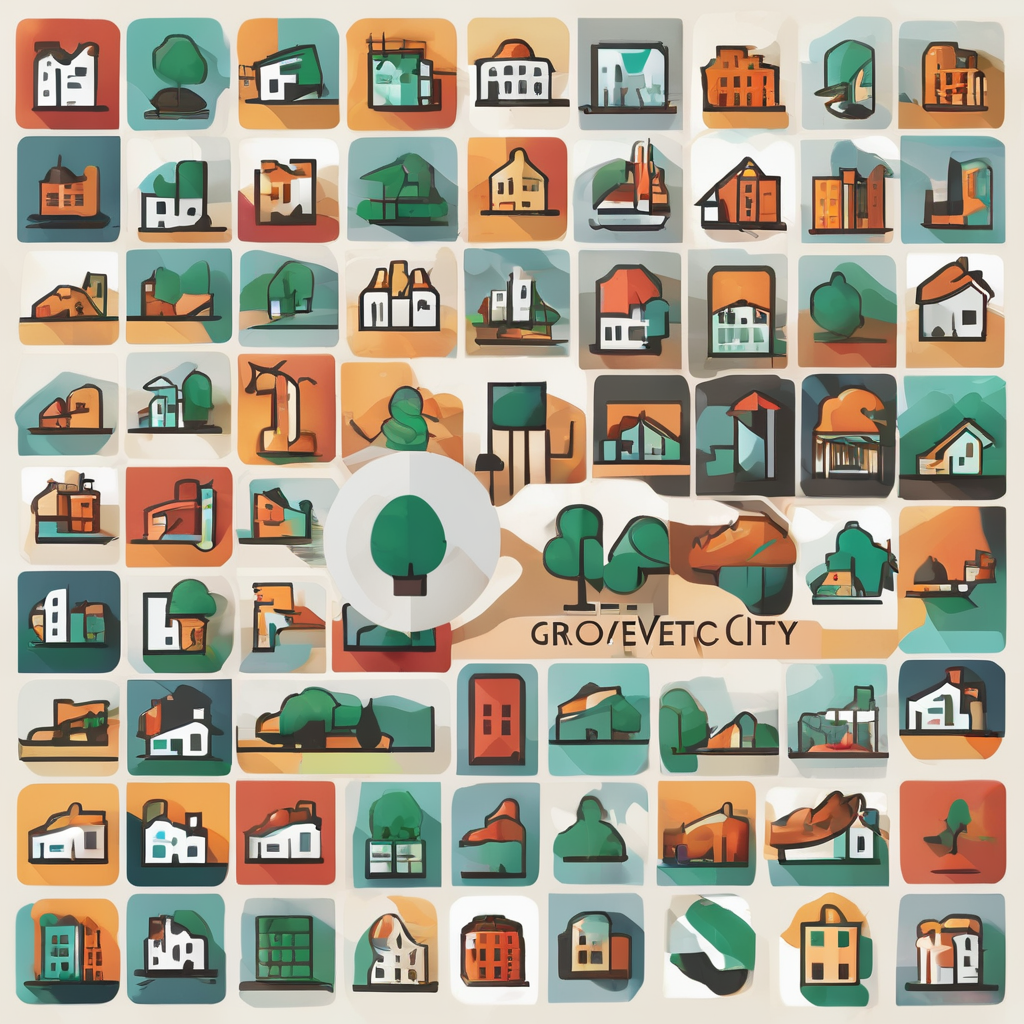Principles of Walkable Design
Incorporating walkable design principles into urban settings is vital for creating vibrant and accessible environments. Central to this concept is the importance of mixed-use developments, which effectively blend residential, commercial, and recreational spaces, fostering walkability. By doing so, these areas become more pedestrian-friendly, encouraging foot traffic and reducing reliance on vehicles.
Key characteristics of walkable neighborhoods include connectivity, accessibility, and safety. Designing interconnected pathways ensures that residents can easily navigate their surroundings, enhancing their daily experience. Furthermore, accessible designs cater to diverse populations, considering different mobility needs. Safety is paramount, with considerations such as ample lighting and pedestrian crossings playing crucial roles in encouraging outdoor activity.
Also to discover : Transforming homes: key approaches to incorporating aging-in-place design in residential real estate developments
Integrating nature and green spaces into urban environments significantly enhances walkability. These natural elements provide aesthetic and health benefits, creating havens for residents to relax and socialise. Parks, tree-lined streets, and gardens contribute to the overall attractiveness of a neighborhood, making outdoor activities more enjoyable and appealing.
Ultimately, embracing these principles of walkable design transforms urban areas into more liveable, sustainable, and community-focused spaces, encouraging residents to engage with their environment and each other.
This might interest you : Transform your high-rise living: effective tips for enhancing indoor air quality in apartments
Case Studies of Successful Mixed-Use Spaces
Examining mixed-use development examples sheds light on effective urban revitalization strategies. These projects illustrate how blending residential, commercial, and recreational spaces can rejuvenate urban areas and bolster community cohesion.
Notable Urban Projects
Several cities have embraced mixed-use spaces to transform their landscapes. Projects like Bristol’s Wapping Wharf and London’s King’s Cross have set benchmarks in urban revitalization. Wapping Wharf beautifully integrates historic docks into contemporary living, offering eateries, housing, and green walkways. King’s Cross, an architectural triumph, has turned a previously neglected area into a thriving hub with offices, homes, cultural venues, and expansive public areas.
Lessons Learned from Each Case
Successful mixed-use developments share common traits. They feature accessible public transit, extensive pedestrian pathways, and maintain a balance of density and open space. These projects also prioritize engagement with stakeholders, ensuring designs meet community needs and preserve local heritage.
Impact on Community Engagement
Mixed-use spaces significantly enhance community interaction. Residents enjoy improved amenities, fostering a sense of belonging and satisfaction. For instance, the vibrant environment at Wapping Wharf encourages social mingling, supporting local businesses and cultural events, thus creating lively, interconnected neighborhoods.
Urban Planning Best Practices
Implementing successful urban planning strategies requires integrating community input throughout the design process. Actively involving residents in discussions ensures that the specific needs and desires of the community are considered, leading to more community-oriented design. This involvement fosters a sense of ownership among residents, increasing their satisfaction with the final development.
Key zoning regulations and policies also play a crucial role in supporting walkability and creating pedestrian-friendly spaces. These guidelines often mandate mixed-use development, encouraging the seamless integration of residential, commercial, and green spaces that boost pedestrian activity.
Promoting public transportation and alternative mobility options are also vital components. Offering reliable public transport reduces urban congestion, and providing pedestrian pathways and cycling lanes can further enhance mobility, making it easier for residents to navigate the city without relying on cars.
These strategies are instrumental in designing cities that are not only functional and efficient but also enjoyable to live, work, and socialise in. Prioritising urban planning strategies that engage communities and offer diverse transportation options ultimately results in more liveable, vibrant urban environments.
Practical Design Tips for Walkable Communities
Designing walkable communities requires practical approaches that focus on creating pedestrian pathways and engaging public spaces. To enhance safety and attraction, successful street design prioritises pedestrians. Key elements include wide walkways, clear signage, and sufficient lighting, ensuring pedestrian-friendly spaces that encourage foot traffic over vehicular movement.
Designing Safe and Inviting Streets
Creating environments that are both safe and appealing is crucial. Incorporate features like pedestrian-only zones, speed bumps, and distinct crosswalks. These features not only enhance safety but also integrate community design tips effectively, promoting a sense of security and liveliness.
Creating Accessible Public Spaces
In public areas, amenities such as benches, water fountains, and shade-providing elements enhance usability. These features cater to diverse needs, ensuring spaces are inclusive and accessible, thus supporting a broader demographic including families, the elderly, and individuals with disabilities.
Fostering Social Interactions in Public Areas
Strategic layout and design can foster community interaction. Consider installing public art, interactive installations, and communal seating arrangements. These design tips encourage engagement, allowing neighbours to connect and interact naturally, enriching the community experience. Such thoughtful configurations transform spaces into dynamic, pedestrian-friendly environments, fostering a stronger community bond.
Sustainability Considerations in Walkable Community Design
Implementing sustainable urban design in walkable communities is crucial for creating eco-friendly and efficient environments. Emphasis is placed on utilizing eco-friendly materials like recycled asphalt and permeable pavements, which enhance durability and reduce environmental impact. Sustainable practices such as rainwater harvesting and solar lighting further contribute to the eco-efficiency of urban spaces, promoting resource conservation and energy savings.
To enhance walkability, integrating green infrastructure provides significant environmental and social benefits. This includes creating green roofs, solar-powered public spaces, and rain gardens that manage stormwater while fostering biodiversity. These strategies not only mitigate urban heat but also transform areas into more attractive and healthier environments.
Energy-efficient solutions like LED lighting and smart building technologies play a vital role in sustainable development. Incorporating these technologies in new projects ensures long-term energy savings and reduces carbon footprints. By prioritizing such sustainable initiatives, urban planners can design communities that blend aesthetics with functionality, promoting an eco-conscious lifestyle.
Ultimately, a commitment to sustainability in walkable design enriches urban spaces, supports environmental health, and enhances quality of life for residents, paving the way for future-focused living.
Visual Examples and Community Benefits
Implementing visual urban design examples helps clarify the transformative potential of walkable communities. These visuals can range from infographics and visualizations that highlight design layouts to diagrams that illustrate sustainable features like green spaces and pedestrian-friendly pathways. By capturing these elements visually, urban planners can better convey the strategic integration of components that foster walkability.
Infographics and Visualizations
Using infographics, designers illustrate crucial elements such as connectivity and accessibility. These visuals demonstrate how closely situated amenities, and green routes enhance pedestrian flow and reduce dependence on vehicles. Infographics effectively communicate scale, distance, and integration of eco-friendly materials in design, making otherwise complex information more accessible.
Testimonials from Residents
Real-life feedback provides compelling evidence of the advantages walkable design principles bring to communities. Residents often speak positively about the enhanced quality of life and increased opportunities for social interactions. Testimonials highlight how these environments foster a sense of belonging and satisfaction, bolstering community ties.
Economic Impact of Walkable Communities
Communities designed with walkability in mind often see a positive economic impact. Local businesses benefit from increased foot traffic, boosting sales and local employment. Retailers and service providers find these areas desirable, knowing that pedestrian-friendly designs contribute to higher customer engagement.








